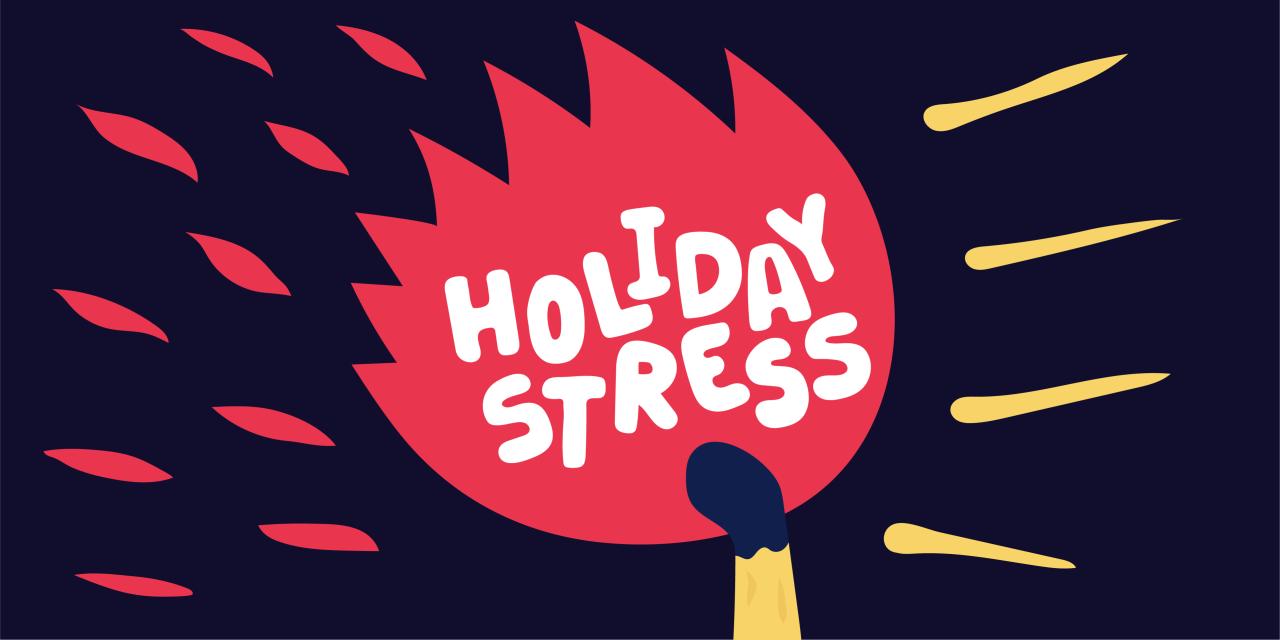
Minimizing Holiday Stress: How Employers Can Make a Difference
1. Introduction
The holiday season, often portrayed as a time of joy and celebration, can also be a period of significant stress for many employees. Factors like personal and financial pressures, end-of-year deadlines, and work-life balance challenges can contribute to heightened stress levels. Employers, recognizing the importance of employee wellness, have a vital role to play in alleviating this stress. This article explores strategies employers can implement to support their workforce during the holidays, ultimately leading to a more engaged and productive team.
Table of Contents
2. Understanding Holiday Stress in the Workplace
When we talk about holiday stress in the workplace, it's essential to recognize that it's a multi-layered issue, one that intertwines professional and personal anxieties. This season often ushers in an avalanche of responsibilities: rushing to hit year-end targets, balancing budgets, and juggling personal commitments like family gatherings and holiday preparations.
-
Professional Pressures: As the year winds down, many employees find themselves engulfed in a race against time to meet business goals or complete projects. This crunch time often means longer hours, tighter deadlines, and a heightened emphasis on accuracy and productivity. It's a perfect storm for workplace stress.
-
Financial Strains: The festive season isn't just about joy and giving; it often brings with it a burden of additional expenses. From buying gifts to planning holiday feasts, these financial obligations can weigh heavily on employees' minds, potentially spilling over into their work life with concerns about budgeting and expenses.
-
Personal Challenges: Beyond the office, employees grapple with personal responsibilities. Organizing family events, managing travel plans, and fulfilling social obligations can create a significant time crunch. The pressure to create the perfect holiday experience can amplify this stress, often leading to feelings of being overwhelmed.
These various stressors manifest in different ways: anxiety, decreased concentration, physical ailments like headaches or fatigue, and even behavioral changes like irritability or withdrawal. This multifaceted impact can take a toll not just on employees' work performance but also on their overall well-being.

3. The Ripple Effect on Productivity and Well-being
The implications of holiday stress stretch far beyond individual employees. It's a domino effect that impacts teams, customer interactions, and the organization as a whole:
-
Individual Impact: Stressed employees often experience a dip in job satisfaction and motivation. Their ability to focus, be creative, and perform efficiently can be significantly hindered, leading to a noticeable drop in productivity.
-
Team Dynamics: Stress doesn't exist in a vacuum. It can alter the entire team's dynamic, disrupting the usual flow of collaboration and communication. This can create a tense and uncomfortable atmosphere, further impacting team morale and effectiveness.
-
Customer Service Quality: Employees wrestling with stress are typically less capable of engaging positively with customers. This can lead to a decline in service quality, potentially harming the company's reputation and customer relationships.
-
Organizational Health: On a broader scale, holiday stress can lead to increased absenteeism and even higher turnover rates. Prolonged stress might push employees to seek a change of environment, perceiving a new job as a possible solution to their stress.
In essence, comprehending the multifaceted nature of holiday stress in the workplace is pivotal. It's not just about acknowledging its existence but actively working towards creating strategies that address and mitigate these stressors. By doing so, businesses don't just enhance employee well-being; they foster a more resilient, productive, and harmonious work environment. Many companies opt for using a workforce management tool, leveraging technology to streamline processes, improve internal communication, and promote a healthier work environment. Here's a list of good WFM solutions companies tend to choose from, so you can do your research and choose the best one for your company's needs.This proactive approach is not just beneficial for the holiday season but is a crucial aspect of maintaining a healthy, thriving workforce year-round.

4. The Role of Employers in Minimizing Holiday Stress
Creating a Supportive Environment
-
Recognizing Stress Signals: One of the first steps in creating a supportive environment is recognizing the signs of stress among employees. Changes in behavior, productivity, or engagement can all be indicators. Employers who are attuned to these signs can provide timely support.
-
Encouraging Open Dialogue: Creating an atmosphere where employees feel comfortable discussing their mental health and stress is crucial. This might involve regular check-ins, providing platforms for anonymous feedback, or organizing sessions where employees can share their experiences and coping strategies in a safe space.
-
Educating Managers: Training managers to recognize and appropriately respond to signs of stress in their teams is vital. They should be equipped with the skills to offer support and direct employees to the necessary resources.
Flexible Work Arrangements
-
Adjustable Schedules: The holiday season often calls for flexible work hours. Allowing employees to start their day earlier or later can help them manage personal commitments, such as holiday shopping or family events, more effectively.
-
Remote Work Options: If possible, offering remote work options can significantly reduce stress for employees. This not only saves commute time but also provides a more comfortable and personalized work environment, which can be particularly beneficial during the hectic holiday period.
-
Time-off Policies: Encouraging employees to take their accrued vacation time during the holidays can be a simple yet effective way to help them recharge and spend time with family.
Implementing Wellness Programs
-
Physical Wellness Initiatives: Programs that promote physical wellness, such as company-sponsored yoga classes, fitness challenges, or even group walks during breaks, can greatly benefit employees' mental and physical health. Physical activity is known to reduce stress and improve mood, making these initiatives especially valuable during the holiday season.
-
Mental Health Resources: Providing resources for mental health, such as access to counseling services, stress management workshops, or mindfulness training, is crucial. These resources can offer employees tools and techniques to effectively manage stress, not just during the holidays but throughout the year.
-
Wellness Challenges: Organizing wellness challenges, like step-count competitions or healthy eating challenges, can be a fun and engaging way to encourage a healthy lifestyle among employees. These challenges can also foster a sense of community and team spirit, which is particularly uplifting during the holidays.
By playing an active role in minimizing holiday stress, employers not only enhance the well-being of their employees but also contribute to a more positive and productive work environment. These initiatives demonstrate a commitment to the holistic health of employees, ultimately benefiting both the individuals and the organization.

5. Encouraging Time Off and Breaks
Promoting the Use of Vacation Days
-
Vacation Day Encouragement: Employers can play a proactive role in ensuring that employees take advantage of their vacation days, particularly during the holiday season. This could include sending out reminders, showcasing the benefits of taking time off, or even incentivizing the use of vacation days.
-
Planning for Absences: To make it easier for employees to take time off, employers can implement strategies for covering workloads in their absence. This can include cross-training team members or hiring temporary staff during peak vacation times.
Regular Breaks and Downtime
-
Scheduled Breaks: Encouraging scheduled breaks throughout the workday can greatly aid in maintaining employee productivity and well-being. These breaks can be formalized in the work schedule, ensuring that employees step away from their desks and recharge.
-
Creating Relaxation Spaces: Providing spaces in the workplace where employees can relax and unwind, such as a lounge area or a quiet room, can be beneficial. These areas can be used for short, restorative breaks during the workday.
-
Promoting Physical Activity: Encouraging physical activity, such as organizing group walks or stretch breaks, can also be an effective way to refresh and rejuvenate employees during the workday.
In the digital age, where technology and constant connectivity can often amplify work-related pressures, employers adopting strategies for stress management can be likened to a necessary downgrading of stress levels, ensuring a healthier work-life balance during the holiday season.
6. Team Building and Social Support
Organizing Team Events
-
Holiday Celebrations: Planning holiday-themed events, either virtually or in person, can create a sense of community and provide a fun break from work. These events can range from holiday parties to themed competitions or virtual gatherings.
-
Volunteer Opportunities: Organizing team volunteer activities can be a meaningful way to build team spirit and give back to the community. This not only provides a break from work but also fosters a sense of fulfillment and camaraderie among employees.
Peer Support Systems
-
Buddy Systems: Implementing a buddy system where employees are paired up can provide a direct support channel. Buddies can check in on each other, offer support, and share strategies for managing work and personal stress.
-
Support Groups: Establishing peer support groups or forums can offer employees a space to discuss challenges and share coping mechanisms. These groups can meet regularly and serve as a safe space for employees to support each other.
Image
7. Communication and Feedback
Transparent Communication
-
Clear Expectations: Leaders should communicate clearly about year-end goals and workloads, helping employees understand what is expected of them. This transparency can reduce uncertainty and stress related to workloads.
-
Open Forums for Questions: Providing opportunities for employees to ask questions or express concerns about workloads or deadlines can foster an environment of open communication. This might include regular team meetings or one-on-one check-ins.
Feedback and Recognition
-
Recognizing Efforts: Acknowledging the hard work and accomplishments of employees, especially during the busy holiday season, can significantly boost morale. This can be done through formal recognition programs or simple gestures of appreciation.
-
Regular Feedback: Offering regular, constructive feedback can help employees feel valued and supported. It also provides them with the opportunity to adjust their work strategies or seek assistance if needed.
By implementing these strategies, employers can create a work environment that not only values productivity but also prioritizes the well-being and satisfaction of its employees. These efforts can lead to a more engaged, motivated, and resilient workforce, which is especially important during the potentially stressful holiday season.
8. Conclusion
The holiday season, while festive, can be a source of significant stress for employees. Employers have a critical role in recognizing and mitigating this stress. By implementing flexible work arrangements, wellness programs, financial support, encouraging breaks, fostering team building, and maintaining transparent communication, employers can significantly contribute to reducing holiday stress. These initiatives not only support the well-being of employees but also enhance overall productivity and morale, creating a positive impact on the organization as a whole. As we embrace the holiday season, let’s prioritize the wellness of our workforce, ensuring a happier, healthier, and more productive work environment.
